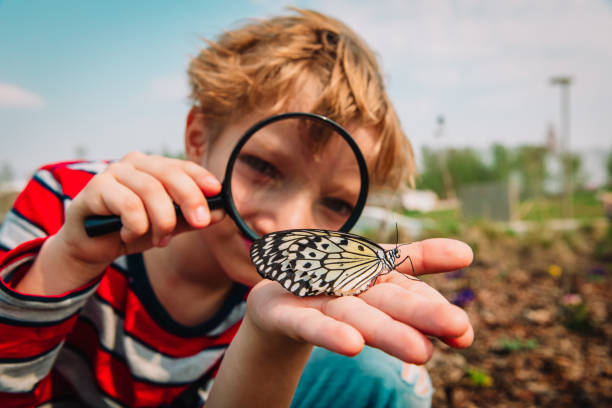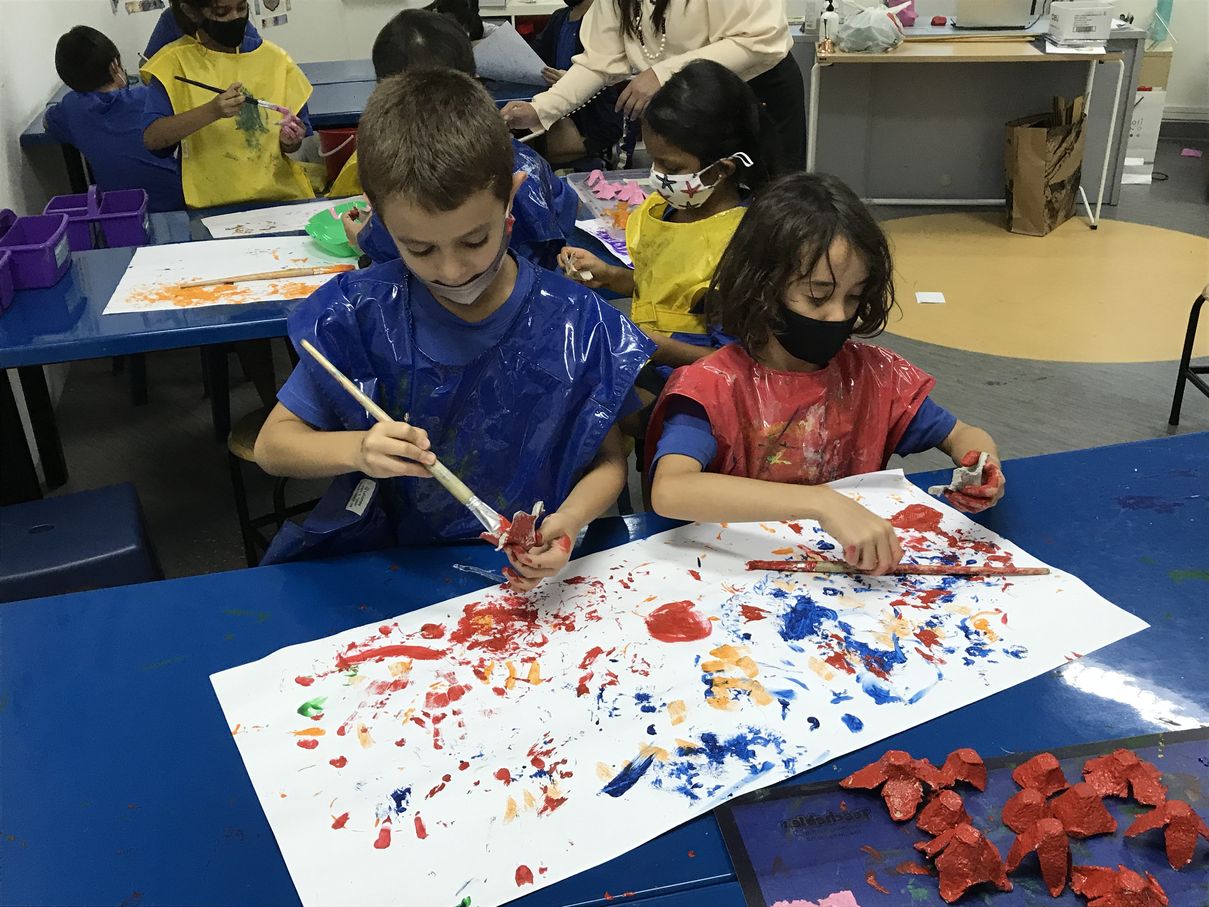
In the past, it was commonly assumed that children were either born with creative skills or were not.
Fortunately, educators have now realized that creativity is a skill that can be nurtured, and as it turns out, it’s one of the most important skills that children can develop!
Leading educational researchers like E. Paul Torrance and Sir Ken Robinson believed that developing creative thinking skills is one of the most important things for teachers to focus on in the classroom.
Some educational research has found that the traditional schooling method, with its rigid curriculum, suppresses students’ creative thinking.
Now, many believe that newer approaches to education that focus on an inquiry-based approach and encourage independent and creative thinking are the best options for primary school-aged students.
Here are 10 ways that you can encourage creative thinking in your child at home:
1) Be Supportive in Your Child’s Creativity

To explore their creativity and expand their imagination, children need to feel comfortable doing so at home.
Here are a few ways that you can create a supportive atmosphere at home that will nurture your child’s creativity:
- Allow them to enjoy independent playtime at home.
- Avoid enrolling them in too many structured activities outside of school.
Give them free time to explore without electronic devices, and fill up their days with new activities. For example, you can consider spending the day by going out for a hike at the nearby parks.
2) Encourage Your Child’s Curiosity

If you see that your young child has developed an interest in a specific area, expose them to more similar experiences. For example, if your child was very excited about a dinosaur lesson at school, encourage their curiosity by taking them to the local library to borrow a few books on dinosaurs.
You may also want to give them some time on the computer to research dinosaur fossils that have recently been uncovered. Take them to a museum or the Jurassic Mile near Changi Airport where there is a dinosaur exhibit on display!
Not only will this help your child search for more answers when they are interested or curious about a topic, but it will give you a chance to make memories together.
3) Avoid Criticism and Judgment When Your Child Shares an Idea
When your child comes to you with a seemingly outlandish idea for a new invention or a solution to a problem, try to avoid making them feel inferior.
Do not laugh at their idea or tell them that it is unrealistic. Instead, encourage them to pursue their idea further and test ways to find out if it is viable.
4) Allow Your Child to Ask Lots of Questions

Parenting can be exhausting, particularly when your child wants to ask you endless questions about the world around them. While it is a huge test of patience trying to answer — or attempt to answer — all of those questions, it’s so important that you encourage your children to ask them.
Being inquisitive about their surroundings is one of the most effective ways for children to learn. When they ask questions and receive thoughtful answers in return, they know that their feelings, concerns, and questions are valid. They will be more likely to ask questions in the future and uncover innovative ideas.
5) Encourage Your Child to Persevere
Sometimes, creative thinking can be challenging. Your child may have an idea for a drawing that they want to do, but then it is more difficult for them to put the concept in their head down on paper.
Rather than telling your child to give up and try again later, encourage them to work through their frustration and do their best work. Remind them that their drawing is impressive, regardless of whether it turned out how they wanted it to or not.
6) Give Yourself Opportunities to be Creative

Lead by example, and make sure to participate in creative activities with your child. You may want to consider having your child plan a meal with you, and then you can prepare it together. Or you could take on a new art project with your child.
When your child sees you being creative, they will be more likely to follow in your footsteps.
If you find it hard to be creative, there are plenty of art and Do-It-Yourself (DIY) kits that can help you get started! Most of the time, these kits are family-friendly.
7) Explore Different Cultural Experiences Together

Exposing your child to different cultures and traditions will encourage them to have an open mind and be more accepting of unfamiliar ideas. You may consider taking your child to a local cultural festival or visiting an ethnic restaurant to try an authentic meal together.
Places in Singapore such as Little India, The Malay Heritage Centre, and Chinatown are a few good examples to expose your child to different cultures and food!
8) Talk About Interconnected Concepts

In traditional schooling, students often learn about different subjects separately. In Science class, they strictly focus on Science topics. In maths, they explore arithmetic and multiplication without connecting Mathematics to the other subjects they are learning about.
In order to encourage a transdisciplinary approach in your home, you can have conversations with your child about how two different concepts relate to one another.
For example, you can talk about the life cycle of plants, all while discussing the importance of purchasing local produce grown by nearby farmers.
9) Opportunities to Enjoy Different Creative Pursuits
Children need to discover their interests and passions independently and to do this, they need exposure to different experiences.
Make sure you allow your child to enjoy various creative pursuits, such as playing an instrument, participating in the community theatre program, or taking a pottery class.
10) Discover Your Child’s Learning Style
Each child has an individual learning style. When you know which learning style best suits your child, you can plan experiences that engage them and help them best retain the information at hand.
For instance, if your child is an aural learner, then you may want to find some fun new songs to listen to together that discuss the topics they are most interested in at the time.

If fostering creativity in your child is important to you, you may want to consider a school that takes a student-centric approach to education.
At the new Suntec campus of One World International School, teachers will create an environment where creativity is a top priority. The inquiry-led, play-based curriculum allows preschool and primary students to explore their ideas, test their theories, and come to their own conclusions.
Visit the school’s website or join a virtual open house for more information!
(Campus opening is subjected to CPE approval.)
